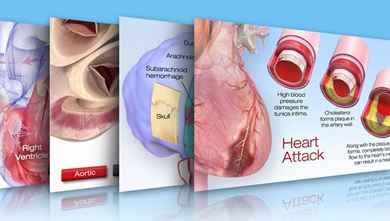Myocardial Perfusion Imaging Test: PET and SPECT
Quick Facts
- Myocardial perfusion imaging (MPI) is a test that shows how well blood flows through the heart muscle.
- There are two kinds of MPI: PET scan and SPECT scan.
- Both PET and SPECT are nuclear medicine procedures.
- The scans can help diagnose or detect many heart conditions.
What is a myocardial perfusion imaging test?
Myocardial perfusion imaging is an imaging test that shows how well blood flows through your heart muscle. It can show areas that aren’t getting enough blood flow. It can also show how well the heart muscle is pumping. This test is often called a nuclear stress test.
There are two types of MPI: positron emission tomography (PET) and single photon emission computed tomography (SPECT). The main difference between a PET and a SPECT scan is the radioactive tracer used during the procedure.
Positron Emission Tomography (PET)
What is a cardiac PET scan?
A PET scan of the heart is an imaging test that uses nuclear medicine. Radioactive tracers produce pictures of your heart. Health care professionals use PET scans to diagnose coronary artery disease (CAD) and damage due to a heart attack. PET scans can show healthy and damaged heart muscle. They are also used to help find out if you will benefit from:
- Percutaneous coronary intervention (PCI) such as angioplasty and stenting
- Coronary artery bypass surgery (CABG)
Why do I need it?
A PET scan can diagnose or detect many conditions, including:
- Coronary artery disease
- Low blood flow in the heart
- Improved blood flow to the heart after a procedure
- Non-ischemic and ischemic cardiomyopathy
- Benign and malignant cardiac tumors
- Effects of chemotherapy on known malignant tumors
- Cardiac diseases such as cardiac sarcoidosis
How does a PET scan work?
A radioactive tracer is injected. It is tagged with a small amount of radioactive material. An image of your heart is created by tracking how your body reacts to the tracer.
Your health care professional can tell whether your heart muscle is functioning by how well it takes up and uses the different tracers.
What are the risks of cardiac PET?
Cardiac PET is safe for most people. The amount of radiation is small. Your body will get rid of it through your kidneys or stool. Drink plenty of water to flush it out of your system. If you’re pregnant or think you might be , or if you’re a nursing mother, tell your health care professional before you have this test. It could harm your baby.
How do I prepare for the scan?
- Tell your health care team about any medications you take, including over-the-counter medications, herbs and vitamins. You may be asked not to take some of them before the test.
- If you have diabetes and take insulin, ask how much you should take before the scan and what you should eat. Your blood sugar levels will be monitored during the test. Test results are not always correct in people with diabetes.
- You may also be asked to avoid certain foods and drinks, such as caffeine or alcohol, for 24 hours before your test.
- Don’t eat, and drink only water for four to six hours before your test.
- Wear comfortable, loose-fitting clothing, and don’t wear jewelry or other metal objects.
- Tell your health care team if you’re:
- Pregnant
- Allergic to injected dyes
- Afraid of tight spaces
- Have anxiety about being enclosed
What happens after my PET scan?
- Ask your health care professional if you can go back to your normal activities right away.
- Drink plenty of water for the next 24 hours to flush the radioactive material from your body.
- Make an appointment with your health care professional to discuss test results and next steps.
Single Photon Emission Computed Tomography (SPECT)
What is a cardiac SPECT scan?
Why do people have cardiac SPECT scans?
How does a SPECT scan work?
What are the risks of a cardiac SPECT scan?
A cardiac SPECT scan is safe for most people.






